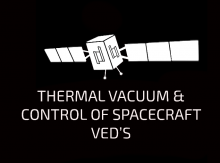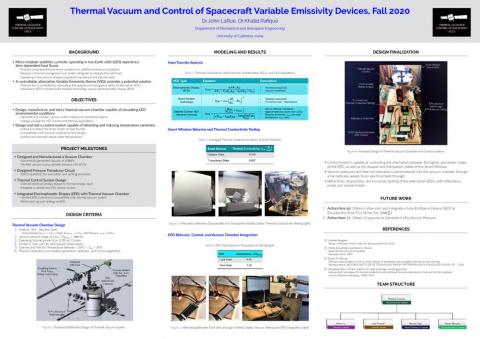Thermal Vacuum and Control of Spacecraft VED's
- Background
- Micro-modular satellites currently operating in low-Earth orbit (LEO) experience time-dependent heat fluxes
- Produces unwanted thermal stress variations on the satellite and payload
- Requires a thermal control system specifically designed to mitigate thermal loads
- A controllable, alternative Variable Emissivity Device (VED) provides a potential solution
- A control system within the spacecraft will detect thermal influx and efflux, and generate a small voltage in response to large temperature differences which approach the spacecraft's operating temperatures
- The voltage will activate the alternating opaque and transparent state capabilities of the novel VED
- Thermal flux mitigation is the process to be controlled
- Micro-modular satellites currently operating in low-Earth orbit (LEO) experience time-dependent heat fluxes
- Goals and Objectives:
- Engineer and test a thermal control system capable of thermal flux detection and data acquisition
- Design, test, and manufacture a vacuum chamber capable of operating within the medium-to-transitional vacuum regime
- Integrate the thermal control system within the vacuum chamber to enable thermal conduction and thermal radiation generation, detection, and testing capabilities
- Perform environmental testing on alternative VED technologies
- Chief Engineer and Project Manager
- Brandon Grajeda [bgrajeda@uci.edu]
- Sponsor/Advisor
- Dr. Khalid Rafique [krafique@uci.edu]
Project status:
Active
Department:
MAE
Term:
Fall
Academic year:
2020-2021


